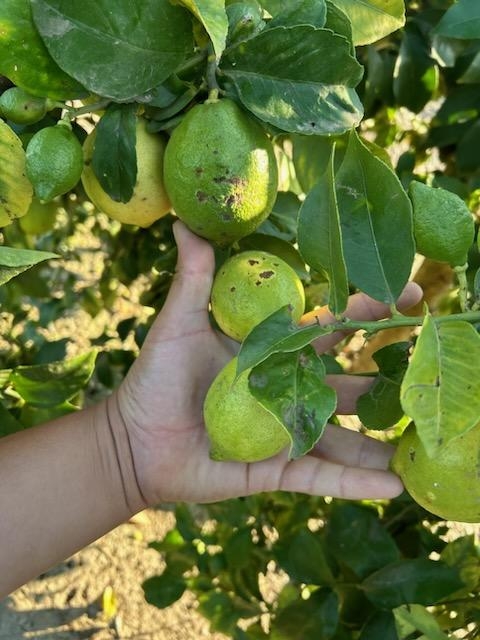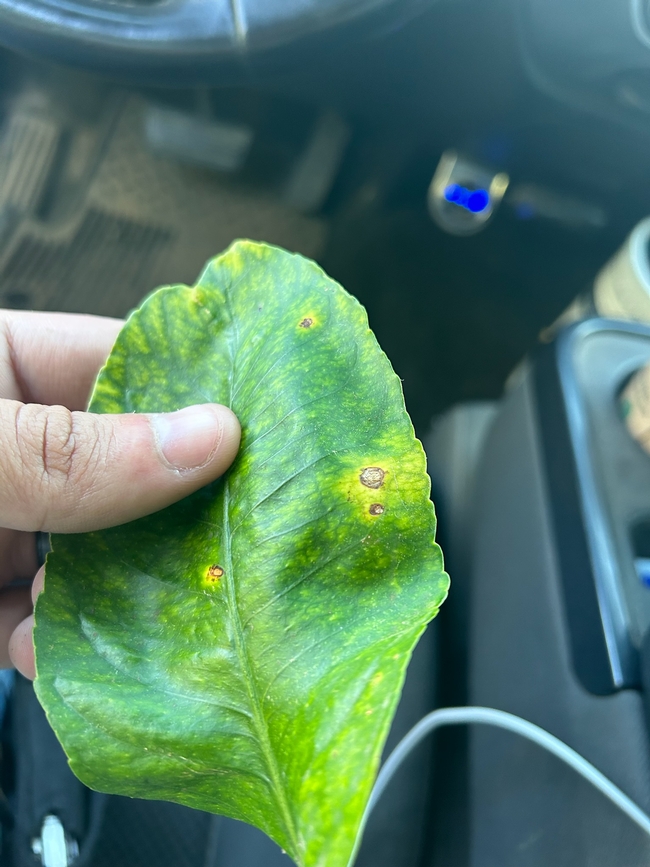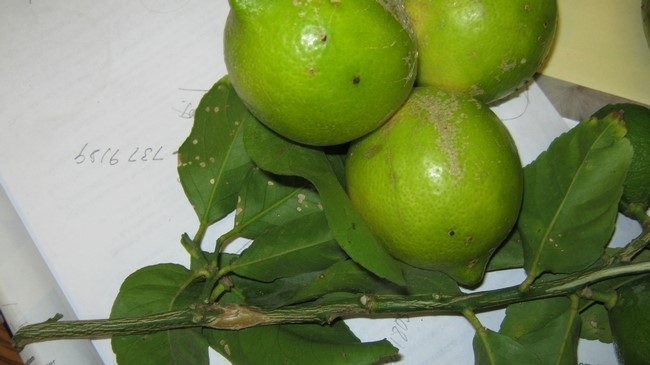So what causes these wounds on leaves and fruit on lemons? Corky, sunken blisters on the leaves. Small divots in the fruit. Some of the spots had halos around them, but most not. That would indicate an infection of some sort. It was showing up in a large orchard near Santa Paula.The growers indicated that maybe 20% of the fruit was affected.
Insects? None. Disease? Not really. More damage was on the fruit than leaves, but what would cause what looked like mechanical damage like this? Outside fruit and mostly on the outside of the outside fruit. Wind poking stems? Frost heave? Hail?
Looking round the area at other orchards, other owners, other management practices, old trees and new. The whole area had the problem and it was only on lemons. It wasn't on opuntia cactus or some nearby avocados, oleanders, or roses. But it was something real and it was something that had happened in that area. Rain. High humidity. Things we don't normally see here in the summer time. And what do we get - Edema. Cell Burst. Mesophyl Collapse.
Edema may be caused by any agent that stimulates an abnormal increase in the size and number of a group of inner cells. Edema can be induced by (1) spraying with some chemicals such as ammoniacal copper carbonate in an oil emulsion, (2) injuries resulting from wind-blown sand particles and sucking insects, (3) high light intensity, and (4) accumulation of water in the intercellular spaces.
The most common cause of edema is the presence of abundant, warm soil water and a cool, moist atmosphere. Under these conditions the roots absorb water at a rate faster than is lost through transpiration. Excess water accumulates in the leaf, some parenchyma cells enlarge and block the stomatal openings through which water vapor is normally released from the plant; thereby contributing to further water retention in the leaf. If this condition persists, the enlarged cells divide, differentiate a cork cambium, and develop elongate cork cells externally to form a periderm. The rupture of the epidermis by the enlarged inner cells and the periderm account for the raised, crusty appearance of older edema spots and also corky veins.
So what can a lemon grower do? Especially since more rain is forecast for this coming year.
1. Avoid irrigation or watering during cool, overcast humid weather. Irrigate when soils need to be watered. Avoid a fix schedule and when humidities are high.
2. Avoid overfertilizing, especially when the plants are growing slowly, such as during the winter months. Maintain fertility based on a leaf analysis. Avoid low levels of potassium and calcium.
Photo:
Early on, the black spots on the fruit start out as a clear exudate. The same for the brown spots on the leaves.



